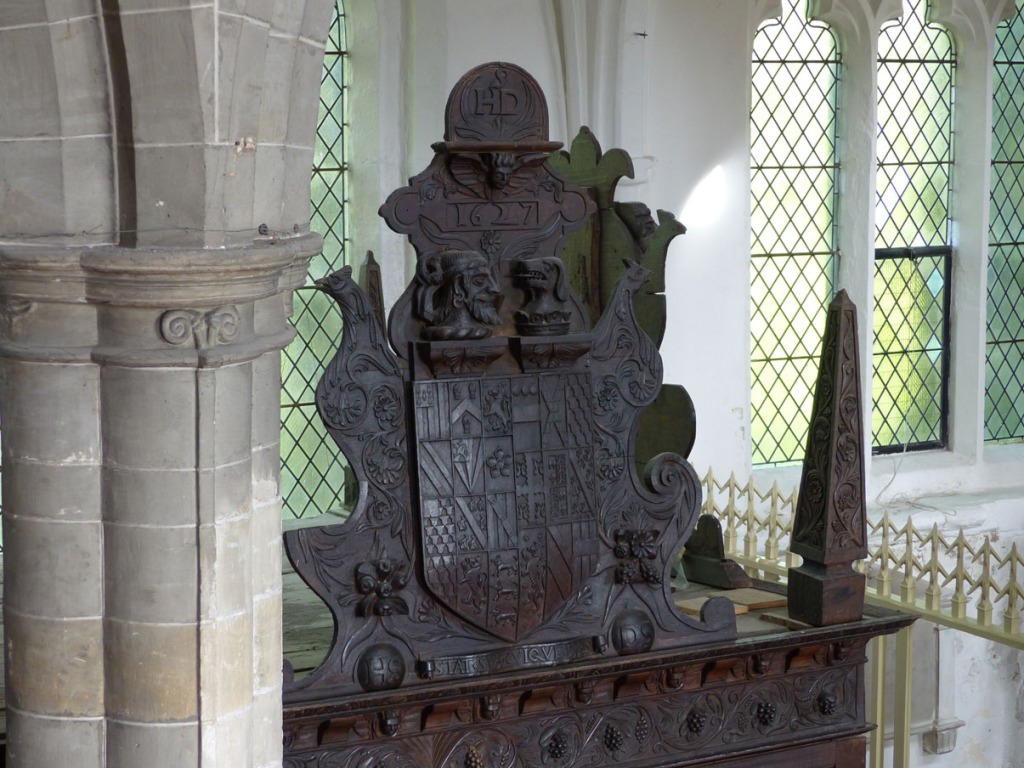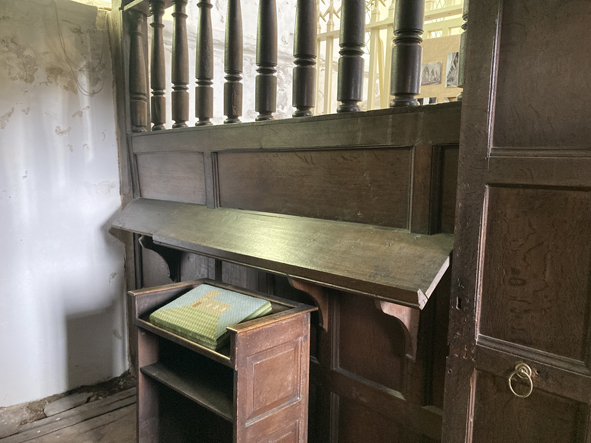We are delighted that Professor Dominic Powlesland conducted a survey of our ancient carvings in June/July 2022 and all of the amazing 3D results are available to view online. This is perfect if you are unable to visit the church or would like a closer look. Here is an example of the Breedon Angel showing the details of the sculpture which, due to its location, is only available to view by appointment.
Breedon 6 – Angel -high resolution by Professor Dominic Powlesland on Sketchfab
Anglo Saxon Carvings
The church contains a series of very important Saxon relief sculptures, some of which may be amongst the earliest to survive in England. They fall into four groups and you can download a guided walk around the carvings here.
The first two groups compromise some 63 feet of wall frieze, intended originally to run parallel in bands around both the inside and outside of the Saxon Minster Church. These are now built into the interior in scattered lengths. The carvings are dated to the 9th century and include Celtic patterns, lions, people, cocks and other birds that are pecking at vines.
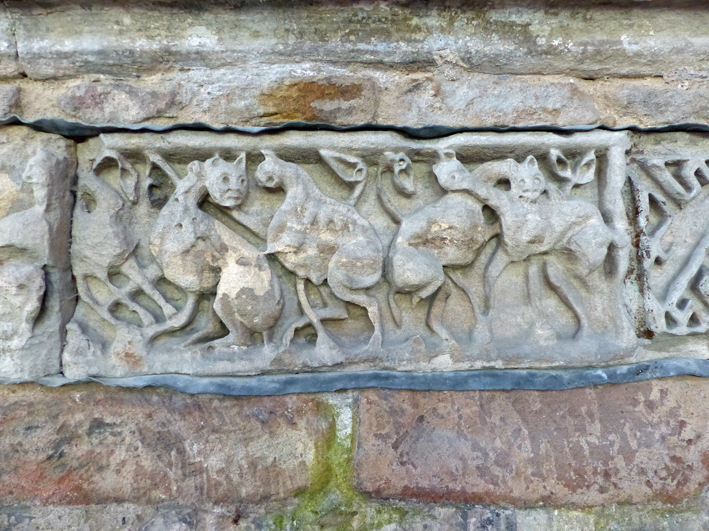
The third group is a series of figure panels set in arches and comprising mainly of saints and the unique Breedon Angel. This is not available to view without an appointment as it is situated in the bell ringing tower, but a copy can be seen on the wall of the south isle. The Angel is one of the finest surviving examples of Saxon figure sculpting and perhaps the earliest carved angel in England.

The final group is a small collection of free standing decorated cross fragments. These date back to 9th / 10th century when the place of worship was re-established again.
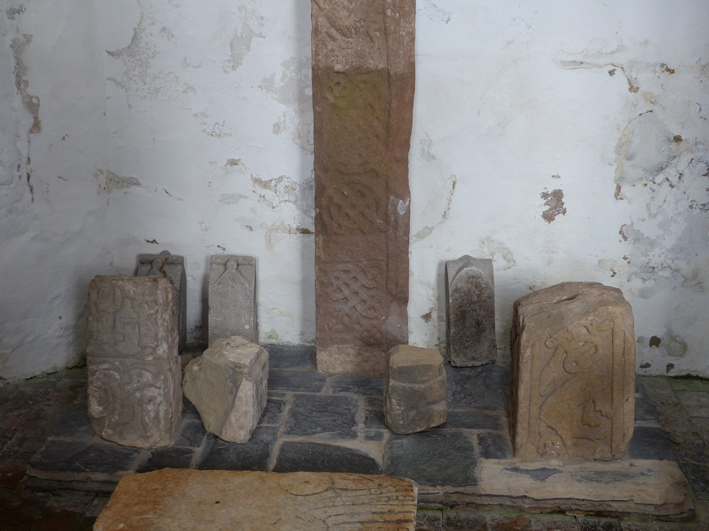
Shirley Monuments
The church contains many 16th and 17th century tombs of the Shirley family, who bought the monastery site. There are two substantial tomb chests, the oldest chest tomb being for Francis Shirley and his wife. Around the chest are carved mourners arranged in pairs. This tomb is dated 1571. The other, similar tomb is for John Shirley and his wife, and is dated 1585.
The tomb of Sir Francis Shirley was repaired after 60 years by his great-grandson, Thomas Shirley. The latter recorded that even after 60 years, Francis’ body was well preserved, with only a black mark apparent on one of his toes, but with no sign of rot. His body was re-wrapped in material and returned to his tomb.

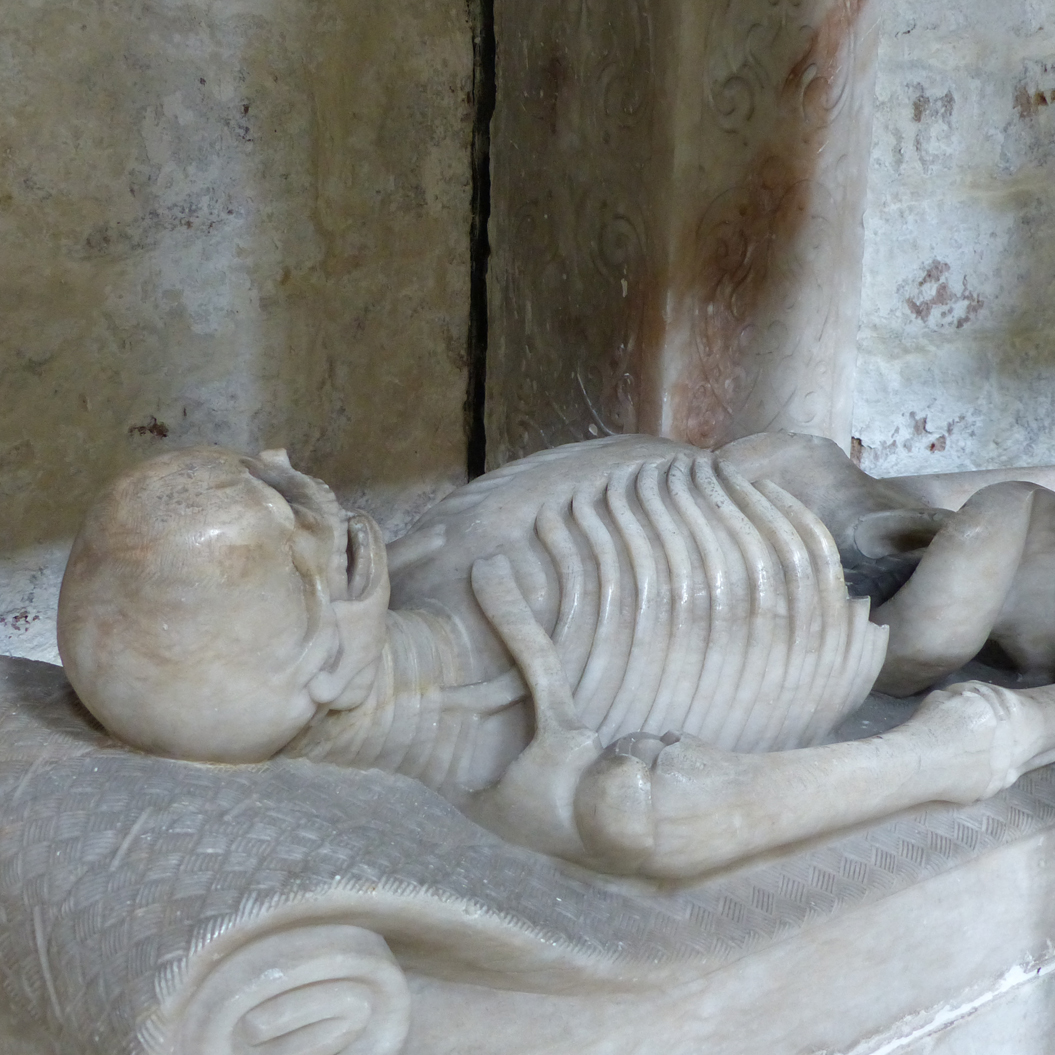


Three substantial tombs were constructed to memorialize Sir George Shirley, his father John, and his grandfather, Thomas. By far the largest monument dominating the inside of the church is that dedicated to Sir George Shirley. It was made over 20 years before Shirley died in 1622. It is dated 1598 and consists of three storeys. On the bottom storey is a realistic skeleton carved from alabaster and showing the mortality of those portrayed above. The inclusion of this cadaver in the design was unusual for the time.
The second storey is supported on six pillars and the space is divided into two arched spaces. To the right, and facing right in prayer, is Sir George Shirley with his two sons behind him. All three figures are dressed in brightly painted period dress and the clothes include details in gold. In the left arch is his wife (d. 1595), daughter, and two babies. According to the Latin inscription, Shirley’s wife died aged 29 whilst giving birth.
The third storey, again supported by six more pillars, is a canopy made in stone and incorporating a large, central carved coat of arms. The monument was constructed from large blocks of alabaster. It was rebuilt in the 19th century by the stonemason, Thomas Allt, who added his signature to the work.
The Shirley Pew
The grand wooden structure in the north aisle is the Shirley pew, with its carvings and obelisks. It dates to 1627, and this privacy-seeking piece of furniture was originally placed in the main part of the church. The Shirley family would have sat in ‘the box’, keeping themselves private from the ‘less important’ members of the congregation. Visitors are able to enter the pew to see it up close and experience ‘the box’ for themselves.
